Superfund Sites in Reuse in Delaware
If you are having trouble viewing the map in your browser, click the 'View larger map' link below
Army Creek Landfill 
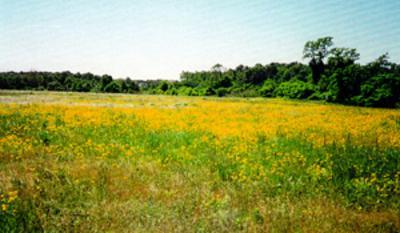 Army Creek LandfillThe 50-acre Army Creek Landfill Superfund site is located in New Castle, Delaware. From 1960 to 1968, potentially responsible parties (PRPs) operated a municipal and industrial waste landfill on site. The landfill contaminated soil, groundwater, nearby Army Creek and local water supply wells. In 1973, the landfill owner installed groundwater recovery wells to protect nearby public water supply wells. EPA added the site to the National Priorities List (NPL) in 1983. Under EPA oversight, PRPs excavated over 100 buried drums containing chemical wastes and disposed of them off site. PRPs also built a multi-layer cap over the landfill, and installed a facility to treat extracted groundwater before its discharge to Army Creek. PRPs completed cleanup construction activities in 1994. The water treatment facility treated contaminated groundwater until 2004. In 2004, EPA approved shutdown of the groundwater recovery system. Collaboration among EPA, local natural resource trustees, the United States Fish and Wildlife Service, the Delaware Division of Fish and Wildlife, and the PRP group incorporated wildlife habitat as part of the multi-layer cap design. Stakeholders planted grasses and vegetation to encourage migratory bird visits and added bird boxes to encourage nesting. Sedimentation basin outlet structures manage runoff, prevent flooding and create standing wetlands. The wetlands prevent erosion and surface water runoff. They also provide valuable habitat for plants and animals.
Army Creek LandfillThe 50-acre Army Creek Landfill Superfund site is located in New Castle, Delaware. From 1960 to 1968, potentially responsible parties (PRPs) operated a municipal and industrial waste landfill on site. The landfill contaminated soil, groundwater, nearby Army Creek and local water supply wells. In 1973, the landfill owner installed groundwater recovery wells to protect nearby public water supply wells. EPA added the site to the National Priorities List (NPL) in 1983. Under EPA oversight, PRPs excavated over 100 buried drums containing chemical wastes and disposed of them off site. PRPs also built a multi-layer cap over the landfill, and installed a facility to treat extracted groundwater before its discharge to Army Creek. PRPs completed cleanup construction activities in 1994. The water treatment facility treated contaminated groundwater until 2004. In 2004, EPA approved shutdown of the groundwater recovery system. Collaboration among EPA, local natural resource trustees, the United States Fish and Wildlife Service, the Delaware Division of Fish and Wildlife, and the PRP group incorporated wildlife habitat as part of the multi-layer cap design. Stakeholders planted grasses and vegetation to encourage migratory bird visits and added bird boxes to encourage nesting. Sedimentation basin outlet structures manage runoff, prevent flooding and create standing wetlands. The wetlands prevent erosion and surface water runoff. They also provide valuable habitat for plants and animals.
Last updated September 2019
As of December 2019, EPA did not have economic data related to on-site businesses, or economic data were not applicable due to site use. For additional information click here.
For more information:
Chem-Solv, Inc.
The 1.5-acre Chem-Solv, Inc. Superfund site is near Dover, Delaware. From 1981 to 1984, Chem-Solv, Inc. recycled solvents at the site. An explosion and fire at the facility in 1984 resulted in a solvent spill that contaminated soil and groundwater. The Delaware Department of Natural Resources and Environmental Control cleaned up the soil and operated a groundwater treatment system in the 1980s. To complete the groundwater cleanup, EPA added the site to the National Priorities List (NPL) in 1990. The site’s potentially responsible parties began extracting and treating groundwater in 1997. In 2017, groundwater sampling showed contaminant concentrations had dropped below cleanup levels. Groundwater extraction and treatment was discontinued. After the system was shut down, contaminants were detected in one monitoring well. Routine groundwater monitoring continues. EPA will evaluate future groundwater monitoring results to determine whether additional actions are needed. The former facility property now has a small residential apartment building. The area that once had groundwater contamination continues to be used by various businesses.
Last updated September 2019
As of December 2019, EPA did not have economic data related to on-site businesses, or economic data were not applicable due to site use. For additional information click here.
For more information:
Delaware City PVC Plant 
The 200-acre Delaware City PVC Plant Superfund site is in New Castle County, Delaware. A polyvinyl chloride (PVC) manufacturing plant operated at the site from 1966 until 2018. Waste disposal practices resulted in contamination of soil and groundwater. Local residents, businesses and farms use groundwater for drinking water and other purposes. EPA placed the site on the National Priorities List (NPL) in 1983. Cleanup included pumping and treating contaminated groundwater, removing off-grade materials and contaminated soil for off-site disposal, and capping the buried sludge pits. Cleanup also included connecting businesses and residences to the public water supply. The groundwater treatment system began operating in 1991. Discovery of a second groundwater contamination plume required the addition of more extraction wells to the treatment system in 2001. A portion of the second plume has migrated beneath a neighboring petroleum refinery. This portion of the plume is not being addressed by the existing pump-and-treat system. An investigation to determine how to address this part of the plume is ongoing. All site-related groundwater contamination is located within a State of Delaware Groundwater Management Zone that restricts potable use of groundwater. Agricultural, industrial, commercial and residential land uses continue at areas that were affected by groundwater contamination.
Last updated September 2019
As of December 2019, EPA did not have economic data related to on-site businesses, or economic data were not applicable due to site use. For additional information click here.
For more information:
Delaware Sand & Gravel Landfill 
The 27-acre Delaware Sand & Gravel Landfill Superfund site is in New Castle, Delaware. Between 1968 and 1976, municipal and industrial wastes were disposed of in unlined gravel pits at the site. Leachate from the disposal areas contaminated groundwater, affecting a nearby residential area and public wellfield. In 1983, EPA added the site to the National Priorities List (NPL). Cleanup included the removal of waste drums, capping of waste disposal areas, bioventing of contaminated soil, and pumping and treating contaminated groundwater. Caps were installed over a 16-acre portion of the site. EPA and the site’s potentially responsible parties worked with the site owner to design a special wear-surface for a 5-acre portion of a landfill cap to enable its reuse. A storage area for impounded vehicles, propane tanks and salvage materials is now located on top of the cap. The owner of the site property also maintains a residence on site.
Last updated September 2019
As of December 2019, EPA did not have economic data related to on-site businesses, or economic data were not applicable due to site use. For additional information click here.
For more information:
Dover Gas Light Co. 
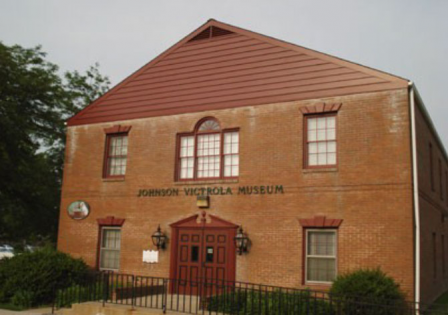 Dover Gas Light Co.The 23-acre Dover Gas Light Co. Superfund site is in Dover, Delaware. From 1859 to 1948, the Dover Gas Light Company processed coal on site to produce gas for use in city street lamps. Site operators buried process materials containing coal tar residues on site, contaminating soil and groundwater. In 1989, EPA placed the site on the National Priorities List (NPL). The site’s potentially responsible parties (PRPs) have conducted cleanup activities under the oversight of EPA and the Delaware Department of Natural Resources and Environmental Control since 1989. These activities included removing and treating contaminated soil and groundwater and capping a portion of the site. Studies to address remaining groundwater contamination are ongoing. Many government buildings, businesses and residences are present in the area of groundwater contamination. Today, the asphalt cap over a 1-acre portion of the site serves as a paved parking lot for the Johnson Victrola Museum.
Dover Gas Light Co.The 23-acre Dover Gas Light Co. Superfund site is in Dover, Delaware. From 1859 to 1948, the Dover Gas Light Company processed coal on site to produce gas for use in city street lamps. Site operators buried process materials containing coal tar residues on site, contaminating soil and groundwater. In 1989, EPA placed the site on the National Priorities List (NPL). The site’s potentially responsible parties (PRPs) have conducted cleanup activities under the oversight of EPA and the Delaware Department of Natural Resources and Environmental Control since 1989. These activities included removing and treating contaminated soil and groundwater and capping a portion of the site. Studies to address remaining groundwater contamination are ongoing. Many government buildings, businesses and residences are present in the area of groundwater contamination. Today, the asphalt cap over a 1-acre portion of the site serves as a paved parking lot for the Johnson Victrola Museum.
Last updated September 2019
As of December 2019, EPA had data on 75 on-site businesses. These businesses employed 1,759 people and generated an estimated $35,763,837 in annual sales revenue. For additional information click here.
For more information:
E.I. Du Pont De Nemours & Co., Inc. (Newport Pigment Plant Landfill) 


 E.I. Du Pont De Nemours & Co., Inc. (Newport Pigment Plant)The E.I. Du Pont De Nemours & Co., Inc. (Newport Pigment Plant Landfill) Superfund site is in Newport, Delaware. It consists of a pigment manufacturing plant and two industrial landfills. Plant operations and waste disposal practices contaminated groundwater and soil as well as adjacent wetlands and the Christina River. In 1990, EPA added the site to the National Priorities List (NPL). DuPont conducted cleanup activities under the oversight of EPA and Delaware’s Department of Natural Resources and Environmental Control. Cleanup included removing contaminated soil and sediment and installing a municipal water line for nearby residents. DuPont completed cleanup in 2002. Operation and maintenance activities are ongoing. Today, restored wetlands provide valuable ecological habitat and much of the property is in reuse or continued use. The pigment manufacturing plant continues to operate. In 2003, DuPont donated part of the site to the town of Newport to create Ella Johnson Park. The park has a walking trail, fitness equipment, picnic tables and benches. A 5-acre solar farm was built on part of the site in 2013. The 548-kilowatt solar farm generates enough electricity to power about 60 homes.
E.I. Du Pont De Nemours & Co., Inc. (Newport Pigment Plant)The E.I. Du Pont De Nemours & Co., Inc. (Newport Pigment Plant Landfill) Superfund site is in Newport, Delaware. It consists of a pigment manufacturing plant and two industrial landfills. Plant operations and waste disposal practices contaminated groundwater and soil as well as adjacent wetlands and the Christina River. In 1990, EPA added the site to the National Priorities List (NPL). DuPont conducted cleanup activities under the oversight of EPA and Delaware’s Department of Natural Resources and Environmental Control. Cleanup included removing contaminated soil and sediment and installing a municipal water line for nearby residents. DuPont completed cleanup in 2002. Operation and maintenance activities are ongoing. Today, restored wetlands provide valuable ecological habitat and much of the property is in reuse or continued use. The pigment manufacturing plant continues to operate. In 2003, DuPont donated part of the site to the town of Newport to create Ella Johnson Park. The park has a walking trail, fitness equipment, picnic tables and benches. A 5-acre solar farm was built on part of the site in 2013. The 548-kilowatt solar farm generates enough electricity to power about 60 homes.
Last updated September 2019
As of December 2019, EPA had data on 4 on-site businesses. These businesses employed 220 people and generated an estimated $384,415,000 in annual sales revenue. For additional information click here.
For more information:
- Reuse and the Benefit to Community: E.I. du Pont de Nemours & Co., Inc. (Newport Pigment Plant Landfill) Case Study (2014) (PDF) (7 pp, 499 K, About PDF)
- Superfund Site Profile Page
Halby Chemical Co. 
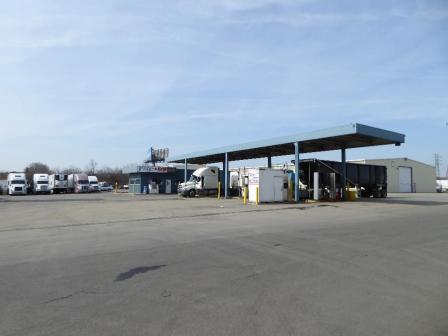 Halby Chemical Co.The Halby Chemical Co. Superfund site is in an industrial area of the Port of Wilmington in New Castle, Delaware. From 1940 to 1995, the 9-acre site was used for chemical manufacturing and storage. Operators discharged wastewater from the plant into an unlined lagoon. Wastewater then flowed through a tidal marsh and the Lobdell Canal into the Christina River, contaminating sediments and groundwater. In 1986, EPA placed the site on the National Priorities List (NPL). Cleanup activities included the disposal of improperly stored chemicals, treating contaminated soil on site, and placing protective covers over contaminated soil and sediment remaining on site. It also included filling in degraded wetlands, creating new wetlands at an off-site location, and placing drinking water restrictions on wells near the site. Monitoring activities are ongoing. The site is now used by a trucking company and other businesses.
Halby Chemical Co.The Halby Chemical Co. Superfund site is in an industrial area of the Port of Wilmington in New Castle, Delaware. From 1940 to 1995, the 9-acre site was used for chemical manufacturing and storage. Operators discharged wastewater from the plant into an unlined lagoon. Wastewater then flowed through a tidal marsh and the Lobdell Canal into the Christina River, contaminating sediments and groundwater. In 1986, EPA placed the site on the National Priorities List (NPL). Cleanup activities included the disposal of improperly stored chemicals, treating contaminated soil on site, and placing protective covers over contaminated soil and sediment remaining on site. It also included filling in degraded wetlands, creating new wetlands at an off-site location, and placing drinking water restrictions on wells near the site. Monitoring activities are ongoing. The site is now used by a trucking company and other businesses.
Last updated September 2019
As of December 2019, EPA had data on 14 on-site businesses. These businesses employed 47 people and generated an estimated $7,479,330 in annual sales revenue. For additional information click here.
For more information:
Harvey & Knott Drum, Inc. 
The 20-acre Harvey & Knott Drum, Inc. Superfund site is in Kirkwood, Delaware. From 1963 to 1969, Harvey & Knott Trucking, Inc. operated an open dump and burning area on site. The facility accepted sanitary, municipal and industrial wastes. Wastes included sludge, paint pigments and solvents. Site operators dumped wastes onto the ground or into trenches, left waste in drums, and buried waste. These activities resulted in contaminated groundwater, surface water, soil and sediment. The surrounding area is densely populated and area residents depend on private shallow wells for water. EPA placed the site on the National Priorities List (NPL) in 1983. Cleanup included draining water from the on-site pond, removing and disposing of drums off site, removing contaminated soil and sediment, capping remaining contaminated soils, and groundwater and surface water monitoring. Groundwater monitoring and maintenance of the monitoring system and cap are ongoing. A recreational paintball facility is now located on site.
Last updated September 2019
As of December 2019, EPA had data on one on-site business. This business employed 16 people and generated an estimated $259,000 in annual sales revenue. For additional information click here.
For more information:
NCR Corp. (Millsboro Plant)
The 80-acre NCR Corp. (Millsboro Plant) Superfund site is in Millsboro, Delaware. From 1967 to 1980, National Cash Register (NCR) made cash registers and other electronic devices on site. Wastes from plating operations discharged into on-site concrete lagoons. On-site disposal of sludge from the lagoons and spilled industrial solvents resulted in the contamination of groundwater. In the early 1980s, First Omni Bank purchased part of the site property and converted the manufacturing building into a records storage and call center. EPA added the site to the National Priorities List (NPL) in 1987. Groundwater pumping and treatment began at the site in 1988. An air sparging and soil vapor extraction system was added to the remedy in 1996. This system was expanded in 1998. Groundwater restoration technologies including chemical oxidation and enhanced bioremediation were added to the remedy in 2016. First Omni Bank – now M&T Bank – remained open during the cleanup process and remains active on site today.
Last updated September 2019
As of December 2019, EPA had data on one on-site business. This business employed 6 people and generated an estimated $2,400,000 in annual sales revenue. For additional information click here.
For more information:
New Castle Spill
The 6-acre New Castle Spill Superfund site is in New Castle, Delaware. From 1969 to 1984, Witco Chemical Company processed materials used to make plastic foam at the site. The company stored large quantities of chemical waste in drums. After a chemical spill led to soil and groundwater contamination, EPA added the site to the National Priorities List (NPL) in 1983. EPA worked with the Delaware Department of Natural Resources and Environmental Control (DNREC) on a cleanup plan that would allow for site reuse. The city of New Castle (the City) provided an alternate water supply to residents affected by groundwater contamination. Witco, the site’s potentially responsible party, placed controls on groundwater use at the site and monitored groundwater. In 1996, after groundwater achieved cleanup goals, EPA took the site off the NPL. Witco donated the site property to the City. The City invested over $700,000 to renovate a historic trolley barn on site and convert it into office space for the New Castle Code Enforcement Department.
Last updated September 2019
As of December 2019, EPA had data on 4 on-site businesses. These businesses employed 27 people. For additional information click here.
For more information:
Tybouts Corner Landfill 
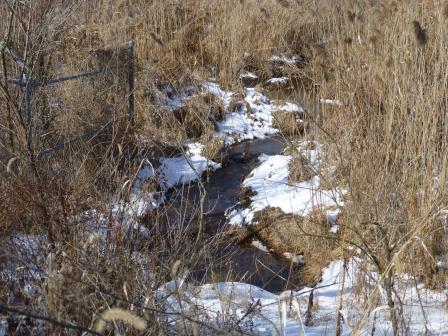 Tybouts Corner LandfillThe 47-acre Tybouts Corner Landfill Superfund site is in New Castle, Delaware. A sand-and-gravel quarry operated at the site until 1968, when the New Castle Department of Public Works converted the area into a landfill. The landfill accepted municipal and household waste until 1971. The landfill waste contaminated groundwater at the site. Investigations also found contamination in two drinking water wells. EPA added the site to the National Priorities List (NPL) in 1983. Under EPA oversight, the site’s potentially responsible parties (PRPs) conducted cleanup activities. The PRPs installed water lines to connect residents with affected wells to the public water supply. The PRPs also capped the landfill and put groundwater extraction and gas collection systems in place. Groundwater extraction ended in 2007. The PRPs used wildflowers and native grasses to stabilize the ground and prevent erosion on the landfill cap. The site is now a wildlife habitat area.
Tybouts Corner LandfillThe 47-acre Tybouts Corner Landfill Superfund site is in New Castle, Delaware. A sand-and-gravel quarry operated at the site until 1968, when the New Castle Department of Public Works converted the area into a landfill. The landfill accepted municipal and household waste until 1971. The landfill waste contaminated groundwater at the site. Investigations also found contamination in two drinking water wells. EPA added the site to the National Priorities List (NPL) in 1983. Under EPA oversight, the site’s potentially responsible parties (PRPs) conducted cleanup activities. The PRPs installed water lines to connect residents with affected wells to the public water supply. The PRPs also capped the landfill and put groundwater extraction and gas collection systems in place. Groundwater extraction ended in 2007. The PRPs used wildflowers and native grasses to stabilize the ground and prevent erosion on the landfill cap. The site is now a wildlife habitat area.
Last updated September 2019
As of December 2019, EPA did not have economic data related to on-site businesses, or economic data were not applicable due to site use. For additional information click here.
For more information:
Wildcat Landfill 

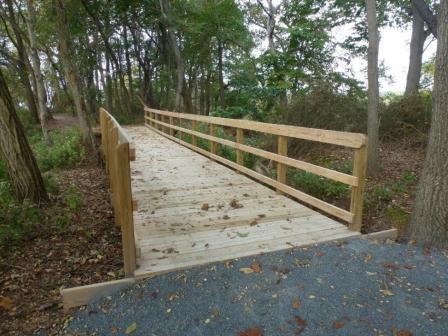 Wildcat LandfillThe Wildcat Landfill Superfund site is located south of Dover, Delaware, near the St. Jones River. A 44-acre landfill operated on site from 1962 to 1973. Landfill operations contaminated soil and groundwater. In 1982, EPA added the site to the National Priorities List (NPL). The potentially responsible parties installed a protective cover over the landfill and planted wildflowers and native plants on top of the cover. The cleanup also restored natural habitat along the banks of the St. Jones River, an area formerly covered by tires, trash and barrels of hazardous waste. After cleanup finished, EPA took the site off the NPL in 2003. In 2005, Kent County purchased several parcels of land, including the site, for reuse as a county conservation area, greenway, museum and archaeological area. In April 2015, Hunn Nature Park opened on site. The 173-acre park includes nature trails for walking, jogging and biking. Part of the St. Jones Greenway crosses the site, connecting area communities to the Delaware Bay.
Wildcat LandfillThe Wildcat Landfill Superfund site is located south of Dover, Delaware, near the St. Jones River. A 44-acre landfill operated on site from 1962 to 1973. Landfill operations contaminated soil and groundwater. In 1982, EPA added the site to the National Priorities List (NPL). The potentially responsible parties installed a protective cover over the landfill and planted wildflowers and native plants on top of the cover. The cleanup also restored natural habitat along the banks of the St. Jones River, an area formerly covered by tires, trash and barrels of hazardous waste. After cleanup finished, EPA took the site off the NPL in 2003. In 2005, Kent County purchased several parcels of land, including the site, for reuse as a county conservation area, greenway, museum and archaeological area. In April 2015, Hunn Nature Park opened on site. The 173-acre park includes nature trails for walking, jogging and biking. Part of the St. Jones Greenway crosses the site, connecting area communities to the Delaware Bay.
Last updated September 2019
As of December 2019, EPA did not have economic data related to on-site businesses, or economic data were not applicable due to site use. For additional information click here.
For more information:
